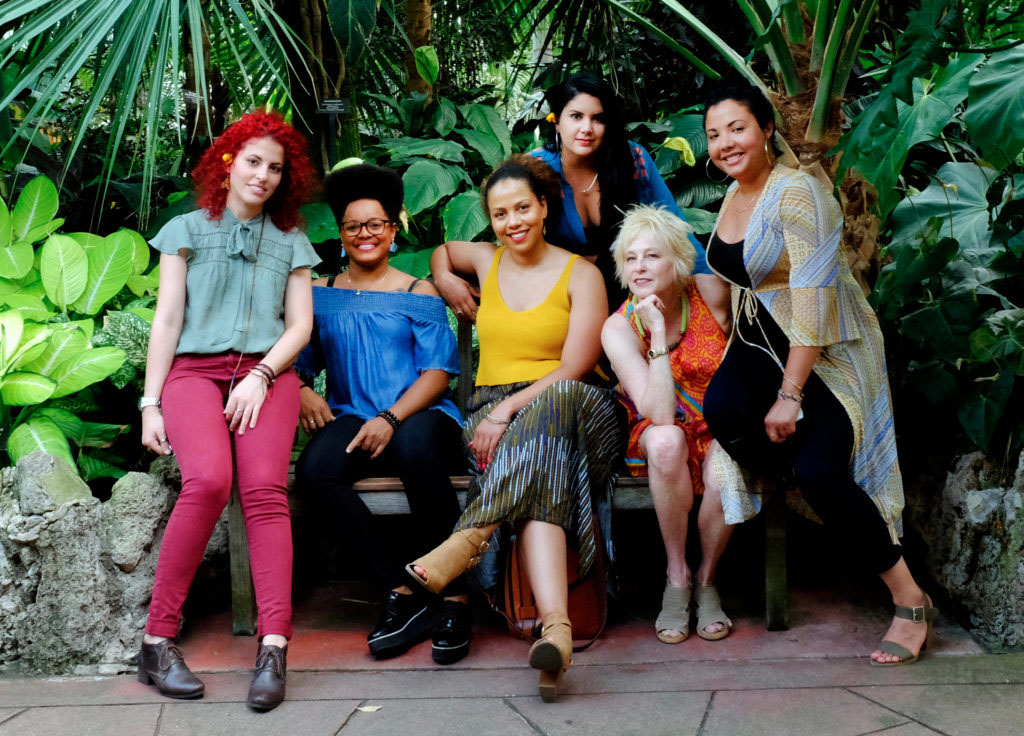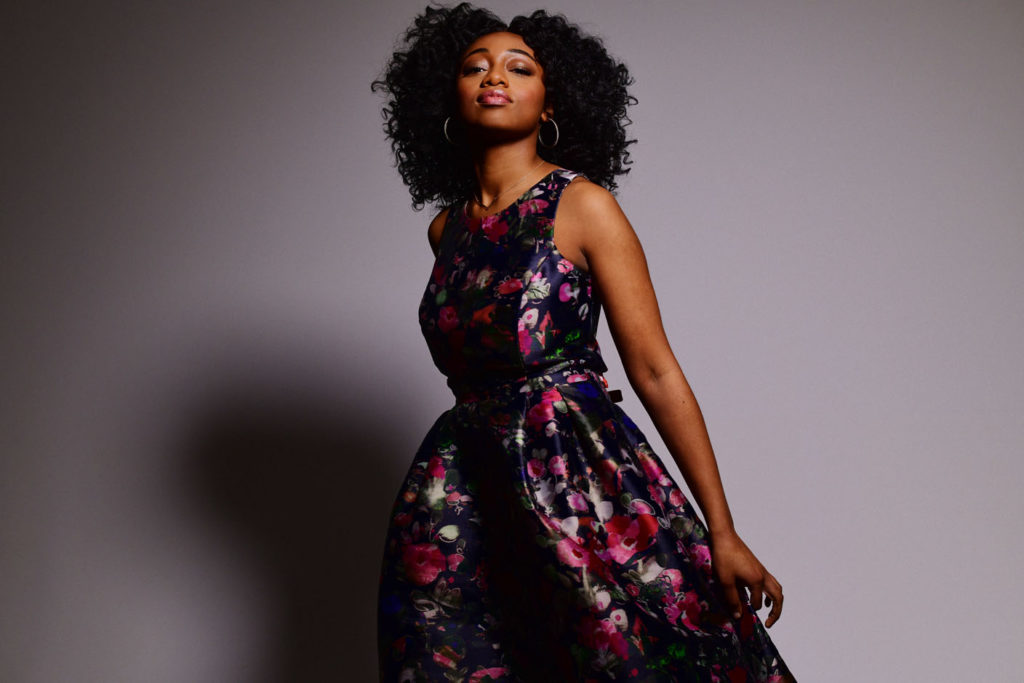JOCELYN MURPHY
jmurphy@nwadg.com
The 30th anniversary season of Fayetteville performing arts venue, the Walton Arts Center, kicks off Sept. 10 with a group celebrating their own significant milestone. Huntertones’ seven members have established a global reputation as a high energy, innovative presence in music during the band’s first decade together.

The New York-based, Ohio State University-formed group made their WAC debut in 2017 and return to the Starrlight Jazz Club series this month on the heels of their new album, “Time to Play,” out Aug. 20.
“The music that we’re writing and the songs on this album … are more definitive — this is the Huntertones sound that has evolved over the years,” says trumpet/sousaphone player Jon Lampley.
The group appears on the WAC’s jazz series lineup and is certainly steeped in the tradition of the genre, but Huntertones have never put too much stock in the idea of conforming to “genre.” Their music has always been a blend of jazz, funk, R&B, rock, soul and hip hop, all focused through the Huntertones’ horn-driven lens.
“You can feel when a band or an artist has checked out the tradition [of the music] and that’s a part of what they do. And I think that’s very important,” Lampley asserts. That is the stepping off point for Huntertones.
“It’s the type of thing where there are a lot of different sounding songs [in our repertoire], but the through-line is ‘this sounds like Huntertones’ — this driving, high energy, accessible type thing. Yeah, there’s some stuff in there that’s kind of slick and sounds relatively complex, but it never is to the point where it feels inaccessible.”
“They bring a real freshness and vitality to jazz, and they also do that by bringing in other styles of music and jazz-ifying them, if you will,” adds Robert Ginsburg, jazz curator at the WAC. “It will be a fun show. If you like to go to a concert and sit with your hands folded on your lap, this may not be the group for you.”

Huntertones’ Aug. 20 release “Time to Play” follows 2018’s “Passport,” which was built around the band members’ world travels with global influences molding each piece of the music. It was a concept album of sorts that encapsulated an extraordinary time in the young band’s life serving as Music Ambassadors to Africa, Eastern Europe and Latin America through the U.S. State Department Music Abroad Program.
Looking to this most recent project, Lampley reveals that the musicians turned inward for the new album’s motivation. Contemplating questions like, “What is everybody feeling? What’s inspiring you right now? What does this band sound like? What is the identity of this band?” prompted music that reflects all the influences that have shaped Huntertones’ sound to this point.
“I think we kind of figured out how to be a little more comfortable in the studio,” Lampley shares. “And Louis Cato (Beyoncé, A Tribe Called Quest, Marcus Miller) was a big part of that as a producer, helping us to lean into what we do in the studio and to really capture the intention of us as a band in every song. It felt really good to come from maybe a band that is trying to do that in the studio to, it no longer felt like we were trying, we were just doing.”
It’s an album that fully embodies the live show, perhaps for the first time in their recorded body of work, Lampley says. And with the journey “Time to Play” has been through to reach its debut, Lampley admits it’s a cathartic experience to finally be able to share it.
“Some of the songs were written in, I think, 2018, and they’ve been slowly morphing and evolving over time,” he shares. “So February, 2020, we went into the studio in Columbus, [Ohio] for a week and recorded these 11 songs. And we’ve never had that much time to make a record, so that felt really good to be able to only do two songs a day and really focus on getting it right. I think that the sound of the record reflects that.”

The following month, covid-19 shut down the music industry, and the album sat on a “digital shelf” for months. Leaning into the forced growth in technological proficiency wrought by the pandemic, Huntertones decided to finish the mixing, editing and post-production process for the album remotely as they headed into fall.
“This album, similar to our own personal lives, has been through such a wild process in this past year,” Lampley confesses.
Even when they weren’t together, each member remained plenty busy through their time apart. Lampley continues his tenure with Jon Batiste and Stay Human, the house band for “The Late Show with Stephen Colbert,” which recorded their program material remotely for nearly a year. Between his work for “The Late Show,” recording trumpet parts and more for fellow artists’ projects, and throwing virtual content up on social media channels for Huntertones, Lampley’s desktop setup at the beginning of the pandemic eventually transitioned to a full at-home studio/office space out of necessity. But he and his colleagues are eager to return to the road, Lampley assures.
“We are very excited to get to perform again, because the last experience we had, specifically with this series and Fayetteville, was really, really cool,” he says of their last WAC engagement. “It was one of the highlights of that tour, and it’ll be cool to get to bring this new music to a venue that we had a great experience with again.”
*****

The Starrlight Jazz Club series continues after Huntertones with four more shows to build a series emblematic of what Ginsburg calls the essence of jazz: a blending of styles that creates something new.
“The challenge has always been that this music is so diverse, that putting your finger on it is really difficult,” Ginsburg explains. “The word implies something different for almost everybody you talk to — is it Dixieland? Is it bebop? Is it avant garde? Is it big band? Is it Glenn Miller? There’s so many styles of this music, and some of the audience for different styles are mutually exclusive.”
But, he emphasizes, “I think it’s just like really fine food or fine wine; you may not like it the first time you hear it, you have to develop a taste for it. And when you learn to appreciate it — and that’s only through exposure — then it helps you to diversify your tastes. And that’s the key with this music.”
The full lineup for the 2021-22 Starrlight Jazz Club series is below:
Huntertones
Sept. 10
Jane Bunnett and Maqueque
Oct. 22
Canadian saxophonist and flutist Jane Bunnett took her first trip to Cuba in 1982 and has subsequently dedicated her life to that country’s music, Ginsburg reveals. But during her travels and experience performing, she noticed a long-standing disparity: Bunnett had mostly collaborated with men, especially instrumentalists in Cuba.
“And in response to that, she’s helped to establish the group of Maqueque, which is an all-female band of young Cuban artists,” Ginsburg explains. “They kind of blend this folkloric Cuban music and jazz.
“A lot of people don’t realize [the] importance [of] the Caribbean influences on jazz. We think of New Orleans, and we think of Chicago and New York, … but really that African/Cuban/Caribbean influence came up through New Orleans to help form this music. So the connections really go deep.”
Samara Joy
Dec. 10
“I’ve been curating the Jazz Series since the building opened, and the most gratifying thing for me has been hearing an artist who has yet to be fully recognized, bringing them to the Walton Arts Center, and then several years later watching them blow up,” Ginsburg enthuses. “This has happened on several occasions. I predict that’s what’s going to happen with Samara. And it’s already happening, quite honestly.”
At just 21 years old, Samara Joy is the 2019 Sarah Vaughan International Jazz Vocal Competition winner and a rising star in the jazz world with a voice as smooth as velvet.
“You hear it immediately,” Ginsburg continues. “There are some artists that just have it, and their instincts are so powerful that they draw you into their music. And this is the case with Samara.”
Sullivan Fortner Trio
Feb. 18, 2022
“This, to me is kind of the bedrock of this music. Somehow, there’s something about a piano jazz trio that embodies this music in a very interesting way,” Ginsburg says of 32-year-old New Orleans native Sullivan Fortner and his trio.
“He has this ability to not only project his own voice … but he also embodies all of what occurred before him, and he reveals this incredible empathy towards the tradition in this style.”
Clark Gibson Quintet
March 5, 2022
Saxophonist Clark Gibson has “put together a quintet of leaders. Everybody in this band is a star in their own right,” Ginsburg asserts.
Premiere trumpet performer Sean Jones; one of the finest trombonists in history, Michael Dease; two-time Grammy Award-nominated organist and winner of DownBeat magazine’s 2016 rising star poll Pat Bianchi; and the 2009 winner of Jazz’s Most Valuable Player in Modern Drummer Magazine, Lewis Nash, alongside Gibson comprise a who’s who list of impressive jazz performers in this group.
“This is really just one of those great quintets — a lot of blowing, a lot of soloing, and Clark at the helm will really knock everybody’s socks off when they hear him play his alto sax.”
__
FAQ
Starrlight Jazz Club Series:
Huntertones
WHEN — 7:30 p.m. Sept. 10
WHERE — 495 W. Dickson St. in Fayetteville
COST — $33-$53; series subscriptions available for $145-$230
INFO — 443-5600, waltonartscenter.org, huntertones.com
FYI — All patrons will be required to present printed and dated proof of a negative covid-19 diagnostic test taken within 72 hours prior to entry OR proof of full vaccination with matching identification. Masks are also required while inside Walton Arts Center.
__
Listen Here!
Podcast
Listen to a conversation between Robert Ginsburg and Free Weekly Associate Editor Jocelyn Murphy here:
nwaonline.com/830jazz/




